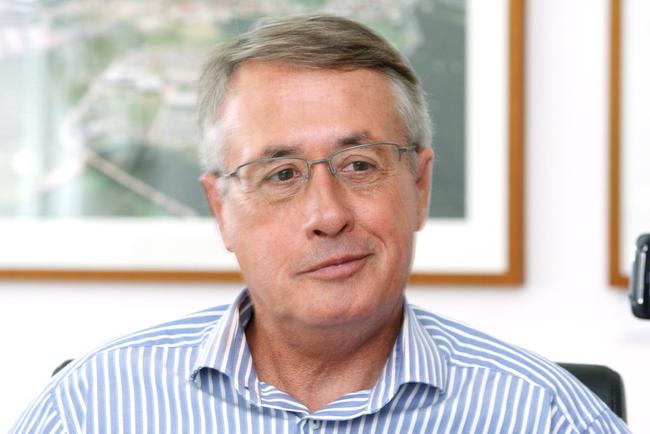Swan wields budget axe to find $43 billion in savings
THE Baby Bonus was one of the high-profile casualties in the Federal Budget handed down by Treasurer Wayne Swan in Canberra last night.

Grafton
Don't miss out on the headlines from Grafton. Followed categories will be added to My News.
THE Baby Bonus was one of the high-profile casualties in the Federal Budget handed down by Treasurer Wayne Swan in Canberra last night.
Mr Swan's sixth and most difficult budget contained a range of measures designed to achieve $43 billion in savings over the next four years.
It also mapped out a plan to return the budget to surplus within two years - albeit a modest $800 million in 2015/16 before increasing to $6.6 billion the following year - while also delivering funding for Labor's landmark reforms - DisabilityCare Australia and Gonski.
All of the pre-announced cuts were there, including $2.3 billion in cuts to tertiary education and plans to reduce the size of the public service.
But the scrapping of the Baby Bonus, which will cease to exist as of March next year, was new.
The move will save $1.1 billion over five years and comes after the government announced in its Mid-Year Economic and Fiscal Outlook it was reducing the Baby Bonus payment for second and subsequent children from $5000 to $3000 from July 1 this year, saving almost $500 million over three years.
Now, just seven months later the government has decided to abolish the payments altogether.
The government will instead increase the Family Tax Benefit Part A by $2000, to be paid in the year following the birth or adoption of a first child or each child in multiple births, and $1000 for each subsequent child.
The additional FTB money will be paid as an initial sum of $500, with the remainder to be paid in seven fortnightly installments.
But parents who take up the government's Paid Parental Leave Scheme will not be eligible to claim the additional FTB payments.
The budget also revealed for the first time the size of the upcoming deficits - $19.4 billion in the current year and $18 billion in 2013/14.
To put these in perspective the MYEFO contained forecasts for $1.1 billion and $2.2 billion surpluses respectively.
Mr Swan again laid the blame for the huge turnaround in the budget bottom line squarely at the feet of a dramatic drop in tax revenue, which as expected will be $17 billion less than forecast in 2012/13 and almost $47 billion over the four years to 2015/16.
As predicted the mining tax failed to pull its weight, with its return expected to be $3.5 billion less than forecast over the next two years, although the budget papers predict it will grow strongly after that.
>> Scrapping baby bonus will 'stop so many teenage pregnancies'
>> Analysis: A budget that breaks promises and raises taxes
>> Michelle Grattan: Budget attacks middle class welfare
EDUCATION
THE Federal Government will pull more than $2.1 billion from existing national education agreements in a bid to fund the Gonski school reforms, despite most states not yet signed up to the deal.
Under the new needs-based funding model the Commonwealth expects the Gonski reforms to cost $9.8 billion during the next six years, growing at a rate of 4.8% a year.
Yesterday's budget revealed the government would pull the $2.1 billion from existing programs, contingent on an agreement being reached with all state and territory governments.
Education funding being redirected included the multi-million dollar National Partnership Agreements on Empowering Local Schools; the Low Socioeconomic Status School Communities and the Literacy and Numeracy agreements.
However, with only New South Wales signed to the Gonski reforms, the Commonwealth will have just four months to bring the other states on board before the existing agreements expire irrespective of progress.
The $9.8 billion Gonski reforms, if agreed to, would form part of a total $104 billion Commonwealth commitment to schools during the next six years.
It would allow allocations of $9271 for each primary school student and $12,193 for every secondary student if delivered, with 65% of the costs borne by the Federal g\Government.
The government allocated $64.7 million over five years to implement the reforms, with $9.7 million this fiscal year, $17.7 million in 2014-15 and $12.6 million in 2015-16.
HEALTH
MORE than $19.3 billion will be pooled over the next seven years to roll out the long-awaited DisabilityCare (national disability insurance scheme).
The budget outlines the Medicare Levy increase from 1.5% to 2% will raise $20.4 billion between 2014-2019 to fuel DisabilityCare Australia.
Once it is fully rolled out in July 2019, DisabilityCare will provide support, including self-directed funding to people with significant disabilities, to 460,000 Australians.
Rural and regional communities suffering from doctor shortages are also set to benefit from the Gillard Government's budget with a significant focus on drawing medical professionals further afield.
About $20 million will be taken from Health Workforce Australia, the oversight body for health employment, to bolster the General Practitioners Rural Incentives Scheme.
The program will focus on enticing medical practitioners to rural and regional outposts at a cost of $33.8 million from 2013-2014.
The budget also allocated $55.7 million over four years to enable women aged between 70-74 years old to be eligible for free breast screens every two years.
The Commonwealth estimates increasing the age bracket will lead to an additional 1170 breast cancer detections every two years.
The budget also outlined a $4.1 billion commitment to the Dental Reform Package, an investment aimed at tackling lengthy public dental waiting lists.
THE REGIONS
WHILE some regional funding remains secure under the Gillard government's deal with the independents, $2billion was stripped from the Regional Infrastructure Fund due to the mining tax shortfall.
Last night's budget revealed the money Treasurer Wayne Swan said last year would help spread the benefits of the mining boom did not eventuate.
It revealed $2 billion over seven years promised under the fund was cut, as a result of "lower than anticipated revenues" from the mining tax.
The funds were taken off future estimates, between 2017-18 and 2019-20, and as such were not directly included in the budget's forward estimates.
However, budget documents said there would still be $2.4 billion available through the fund during the next nine years.
Those funds would instead be spent under the Nation Building Program, which allows for larger projects in capital cities, rather than regional-specific projects.
The infrastructure budget showed numerous projects across Queensland and north New South Wales which were promised funding, but did not include specific spending allocations for such projects, or when such allocations would be made.
As part of the crucial promise made to the independents, the Gillard government has also allocated $840 million under the Regional Development Australia Fund.
The fund will include $160 million for projects this year, $364 million in 2014-15, $224 million in 2015-16 and $92 million in 2016-17 for region-specific infrastructure projects.
More than $170 million was also removed from the regional adjustment package for the carbon, after Treasury forecasts for the price were revised down from $25 in 2014-15 to $12 in the same year.
RURAL packages will receive an extra $420 million from the budget allocated for loans during the next two years.
Nearly $100 million will be spent on the National Drought reform from July next year, including paying producers the equivalent of the dole for up to three years.
But while the drought reforms were a significant new Gillard government policy, producers will have to sign up to "reciprocal obligations" and reduce their exposure to future natural disasters, among other on-farm measures.
Under the drought reforms, the budget also revealed the recently signed $99 million Tasmanian Forests Agreement would be financed by a redirection of funds from the environment department's Biodiversity Fund.
Other programs included $1.9 billion for quarantine services, $1.7 billion for rural research and development corporations and $17.5 million for rural financial counselling.
CARBON PRICING
No tax cuts to ease carbon tax burden
AUSTRALIANS will miss out on a tax reprieve to ease the carbon tax burden because the carbon price will fall well below what the government anticipated.
Hundreds of millions of dollars in funding will also be slashed from climate change programs as a result of the carbon price falling to $12.10 in 2015-2016.
Australia's carbon price will link with international carbon prices in 2015 through the emissions trading scheme.
SPORTS DOPING
Funds to be injected into anti-doping
THE Australian Sports Anti-Doping Authority will get an additional $1.8 billion over the next three years to combat the much-publicised drug crisis.
Beginning in 2012/13 with $400,000 the money, which was flagged by the government in February when it released the Organised Crime and Drugs in Sport report, will be used to boost ASADA's intelligence and investigation capabilities.
LOCAL GOV'T
Referendum receives $50m
THE Federal Government has committed more than $50 million to conduct and promote the coming local government referendum, relieving financial pressure for councils.
The Australian Electoral Commission will receive $40 million to conduct the September referendum on the constitutional recognition of local government and about $11 million has been allocated to promote it.
COAL SEAM GAS
$38m committed to CSG law reforms
INDEPENDENT MP Tony Windsor has had a win in the budget, with more than $38 million allocated to deliver promised changes to environmental law.
The new laws will force coal seam gas and large coal mine proponents to assess their effects on water resources.
The government will put $38.5 million over four years towards the changes which have already passed the House of Representatives.
CHILDCARE
No increase to Child Care Rebate
THE government will again delay increasing the cap on the Child Care Rebate by at least three years, saving $100 million through to 2016-17.
While parents will continue to get back half of their out-of-pocket expenses up to a maximum of $7500, the government has decided to extend the pause on indexation beyond 2013/14.
However the government has committed more than $310 million over the next four years to help long-day care centres to attract and retain quality staff.
Originally published as Swan wields budget axe to find $43 billion in savings


